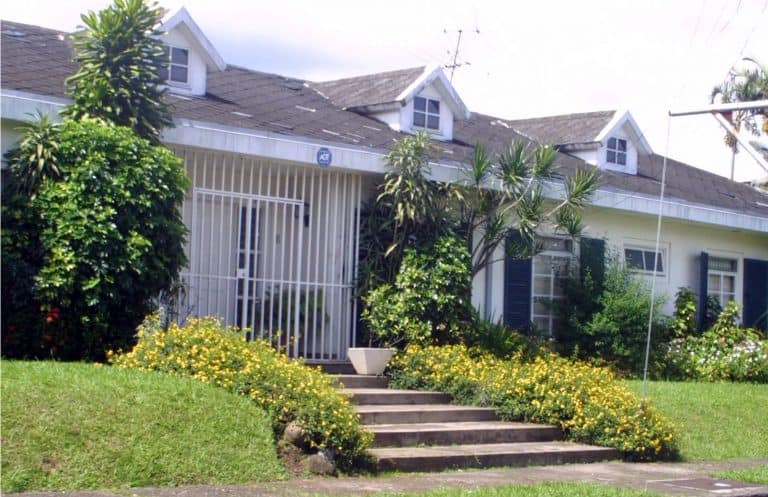THE first place I saw after I began my search for an apartment in the San José area was a wide cement hallway with a porch and a toilet, which cost just under what I paid for a room in Boulder, Colorado, when I was a student.
I slipped out of there thinking that the landlord was over-charging, and resigned myself to living in an urban shanty and a room booby-trapped with roach bait.
Since then, I have discovered that housing in Costa Rica can cost more than you might expect, but there are good deals if you take the time to find them.
LOCATING an address in a city of nameless streets is like going on a scavenger hunt – the lackadaisical directions depend on parks, bars, and colors of houses, any of which might no longer be there except in people’s memories.
And people do not always know their cardinal directions. Once in Barrio Pinto, a San Pedro neighborhood east of the capital, I called a woman twice from a public phone to find out where the house was, and found out that her idea of west was the opposite of that of four people who I had asked in passing – and she still insisted they were wrong.
Some people may get lucky and find the right place at the right price right away. Others may never find exactly what they are looking for, and still others, like myself, make a career out of apartment hunting for six weeks before finally settling on something.
THE weird thing is that prices vary by whim more than by quality or location. Within blocks of each another, you’ll find a small single room available in a shared house and a mid-sized, furnished studio apartment with a garden, both for $180 per month.
Low-priced rooms might provoke images of sleeping on a straw mat with a roach for a pillow, but occasionally that’s not the case.
Before I began, I decided on the neighborhood where I wanted to live. Some places are notorious for crime, others for high prices, and others are just too far away along traffic-clogged roads.
I asked about a neighborhood’s reputation before going and, unless people made throat-cutting gestures, went there to decide for myself.
BEST places to find rental ads are in the classified sections of The Tico Times, La Nación and other newspapers. Ads also can be found tacked to bulletin boards around the University of Costa Rica, in San Pedro, and taped to bus stop shelters and street lampposts around all the major universities. Super Sindy in San Pedro has a bulletin board, and other large grocery stores such as Más x Menos have them as well.
I found my apartment by chance though, on the walk back from looking at a room that was a step up from a cardboard box and a garden hose. The apartment I ended up selecting had a “For Rent” sign on the street.
Once you have a list of phone numbers, you should know what kind of thing you are getting into. Habitaciones, rooms in a shared house, are the cheapest deal and are usually shared with a family, sometimes with students.
These rooms may have private entrances or come with laundry service, meals and a curfew, depending on the owners. They can be good for people who want to speak Spanish at home, students or young people and people who are still searching for their own apartment.
APARTMENTS and houses usually cost about the same per bedroom, and vary incredibly in quality, even within the same price range.
Furnished apartments and houses are usually available, and owners of unfurnished places sometimes can be talked into scrounging up a couple chairs, a fridge and a set of burners.
Some apartments shake every few minutes with passing buses, and conversations are limited to body language and note writing when rigs stop at the intersections outside.
The noise level is something else to think about – I chose my apartment because it is set back from the street and situated around a shared garden (but even as I write this a car alarm is beeping and dogs are barking outside).
COLORS are another concern. Earth tones appear to be unknown here – walls are more vibrantly painted than the somber hues of the United States or, I imagine, anywhere with a colder climate.
I compromised with my apartment – I live in a beautiful place beside a quiet garden with a couple of good restaurants nearby, and pay a low rent, but have to wake up to teal-colored walls every morning.
Finding the right place may not be as difficult as I made it – it may be easier to just take a walk in a neighborhood you like and read the signs on people’s security gates.



